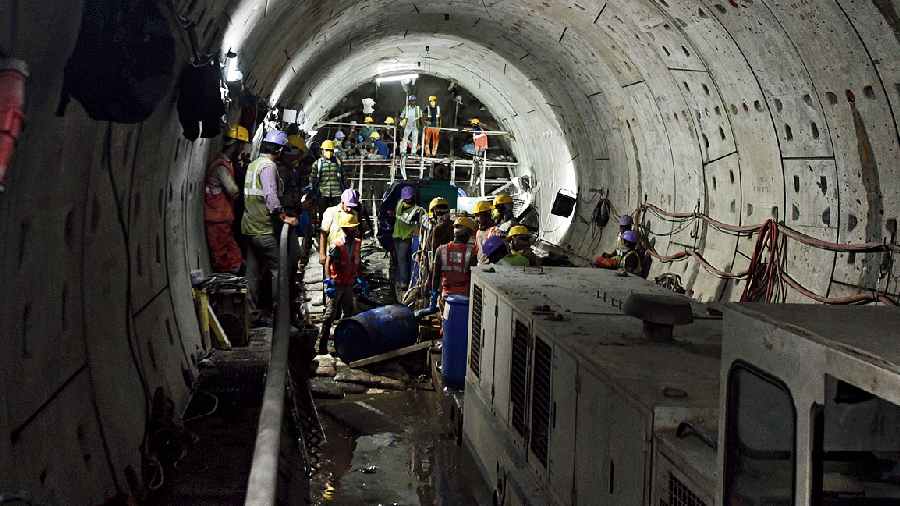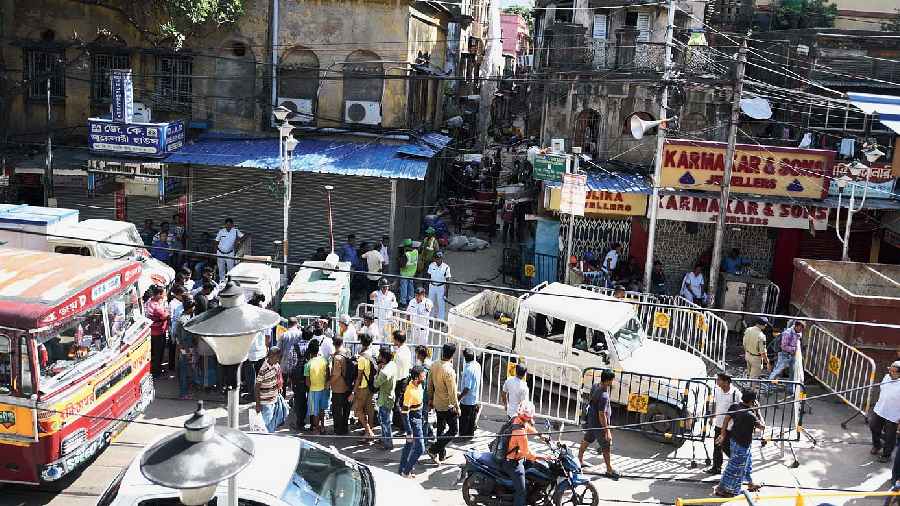Environment scientists who had studied the 2019 subsidence in Bowbazar have pointed a finger at “excessive” withdrawal of groundwater for the East-West Metro, claiming the same set of factors were at play a few days back when several buildings in the area developed cracks again.
One of the experts associated with the study called for an immediate halt to groundwater extraction in adjoining areas to prevent further cave-ins.
The “dynamics” seem to have got repeated, Professor Pradip Sikdar, of the department of environment management in the Indian Institute of Social Welfare and Business Management, Kolkata, has told The Plurals.
The suggestion came even as dozens of families struggled to pick up the threads of their disrupted lives after being suddenly evacuated from their homes that had developed cracks.
The study, conducted by Sumanta Banerjee and Prof. Sikdar, had gone into the September 2019 incident when a tunnel boring machine (TBM) hit an unidentified sand bed 14 metres below ground level. “On 2nd September 2019, (a) TBM (tunnel boring machine) named ‘Chundee’ hit an unidentified sand bed at a depth of 14 m bgl (below ground level), resulting in (the) flooding of the Metro tunnel…,” Banerjee and Sikdar said in a paper they co-authored.
The paper, published in the Journal of Geological Society of India in November 2020, said that because of that incident, “buildings at Durga Pithuri Lane, Sankra Para Lane, Gaur De Lane and Hidaram Banerjee Lane in Bowbazar of Central Kolkata developed cracks”.
“Land subsidence,” the paper added, occurred “due to (the) decline of piezometric (groundwater level) surface which results in vertical compression of the sub-surface materials”.
Most of the affected buildings had developed cracks then, while some had collapsed.
Sikdar, who spoke to The Plurals, explained in layman’s terms what exactly had happened. “There is a layer of clay about 14 metres below land in the Bowbazar area and then comes a sand layer. When the accident during the East-West Metro construction happened, excessive withdrawal of groundwater had already lowered the water level in the sand layer. As the TBM punctured the sand layer, its water gushed out into the tunnel, leading to the corresponding loss of water from the clay layer and, hence, unequal settling of the clay mass,” Sikdar, a groundwater expert, said, explaining that this triggered the landmass subsidence and led to the development of cracks in the buildings in the affected area.
“Recently, the dynamics got apparently repeated when, while trying to pull out two tunnel boring machines from the underground, a fresh incision might have been made, leading to fresh release of water from the sand layer, and another spell of subsidence.”
The environment scientist called for prompt action to stop the withdrawal of groundwater as far as possible from adjoining areas within a 1km radius. If possible, he said, sand layers should be artificially recharged with water so that the water level rises, leading to an increase of hydrostatic pressure in the area that might help in halting the land subsidence process.
“The opening of the tunnel, created by the extrication of the two tunnel boring machines, should also be plugged at the earliest,” Sikdar said.


